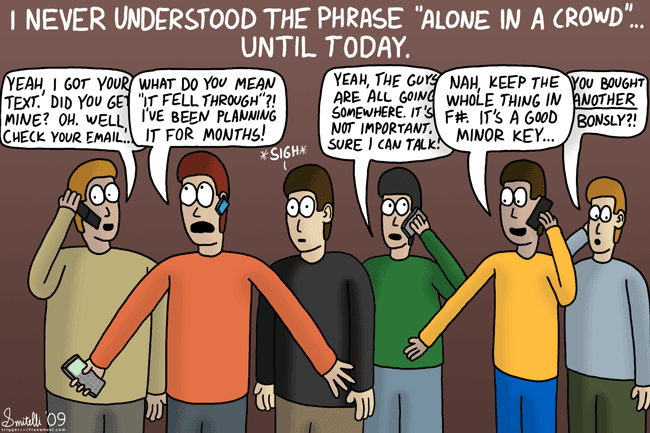-
3-minute read
-
3rd June 2020
Writing Tips: What Is an Oxymoron?
Have you ever agreed to disagree? Or told a joke that went down like a lead balloon? These are known as oxymorons, which use contrasting words to create interesting effects. Our guide explains what an oxymoron is and when you might want to use one in your own writing.
What Is an Oxymoron?
An oxymoron is a figure of speech that involves two words (or short phrases) that appear to contradict each other. And while using two conflicting terms is sometimes an error, the contradiction in an oxymoron is usually deliberate and designed to create a rhetorical effect.
We can see how this works if we look at the phrase ‘alone in a crowd’.

A ‘crowd’ is a large group, so you can’t actually be alone while you’re in the middle of one. On a literal level, then, being ‘alone in a crowd’ is impossible. However, we use the contradiction in this expression to suggest that someone can feel alone even when they are with other people.
To summarise, then, an oxymoron shows an apparent contradiction, but it usually has an underlying meaning to figure out. Lots of well-known expressions are examples of this. For instance:
Their relationship is an open secret.
The room was filled with a deafening silence.
The soldier was wounded by friendly fire.
Keep an eye out for everyday oxymorons next time you’re reading!
Find this useful?
Subscribe to our newsletter and get writing tips from our editors straight to your inbox.
Subscribe to Beyond the Margins and get your monthly fix of editorial strategy, workflow tips, and real-world examples from content leaders.
Literary Oxymorons
Oxymorons are often used in literary writing to grab the reader’s attention and create specific effects. Shakespeare’s Romeo & Juliet contains some well-known examples, including one passage packed with oxymorons:
These expressions highlight the conflicting feelings that Romeo is experiencing. And as with phrases like ‘alone in a crowd’, this works by placing two contrasting things next to one another (e.g. love and hate, heaviness and lightness), creating a rhetorical (poetic) effect that makes the reader think about the meaning of the contradiction.
On a broader scale, the names of some styles of literature are oxymorons, too. Consider how tragicomedy and magic realism, for instance, both highlight a mix of two contrasting approaches or effects.
When to Use Oxymorons in Your Writing
As we’ve shown, some oxymorons are common expressions that we may even use without thinking. And it is fine to use these everyday oxymorons in most types of writing as long as their meaning is clear in context.
But you can also invent oxymorons for rhetorical effect. For instance, you might use an apparent contradiction to encourage readers to think further about what’s being said or to draw their attention to a paradox.
To use an oxymoron effectively, think about these key questions:
- What’s the contradiction between the two words you’re using?
- What’s the underlying meaning you want the reader to think about?
- How clearly do the contrasting words connect with that meaning? And how can you phrase the oxymoron to make your point effectively?
And if you need any more advice about oxymorons or other rhetorical effects in your writing, check out our expert proofreading and editing services – we’re always on hand to help!